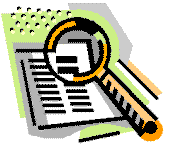The Science Of Scientific Writing Set 2 Set 2 - Indicator words : 3 types of Indicators : Example : Exercise 1 : Exercise 2 : Exercise 3 : Exercise 4 : Exercise 5 : Exercise 6-Quiz : Exercise 7 : Final page Set 2.
OVERVIEW: The way to well-written science
PART I: Paragraphs and Sentences
SET A: Paragraphs: The Maps Behind Them
SET B: Paragraphs: Using Maps to Meet Readers' Expectations
SET C: Paragraphs with Something Extra: Points and Tails
SET D: The Generic Section: Expectations and Maps as Blueprints
SET E: Scientific Sections: The Methods and Results
SET F: Scientific Sections: The Discussion
SET G : Scientific Sections: The Introduction
SET H : Sentences
SET I : The Paper as a Whole
PART II: The Paper and its Sections
SET 1: Argument Parts
SET 2: Indicator Words
SET 4: Locating Arguments in Prose
SET 5: Rationale's Essay Planner
SET 6: Evidence in Arguments: Basis Boxes
Synthesis 1: Position-Early Paragraphs
Synthesis 2: Position-Final Paragraphs
Synthesis 3: Writing a Discussion I
Synthesis 4: Writing a Discussion II
Exercise 6
Let's get some practise at finding indicator words in an extended written text
Try this short quiz to see how good you are at tracking down indicators and reading the clues they provide:
The quiz will open in a new window. Close the quiz window when you're finished, then check your ranking below.

How did you go?
81-100% Super sleuth
61-80% Part-time private eye
41-60% Amateur gumshoe
21-40% Distracted detective
0-20% Your bloodhound has a head cold
Content of this page drawn in whole or part from the Austhink Rationale Exercises with permission from Austhink .